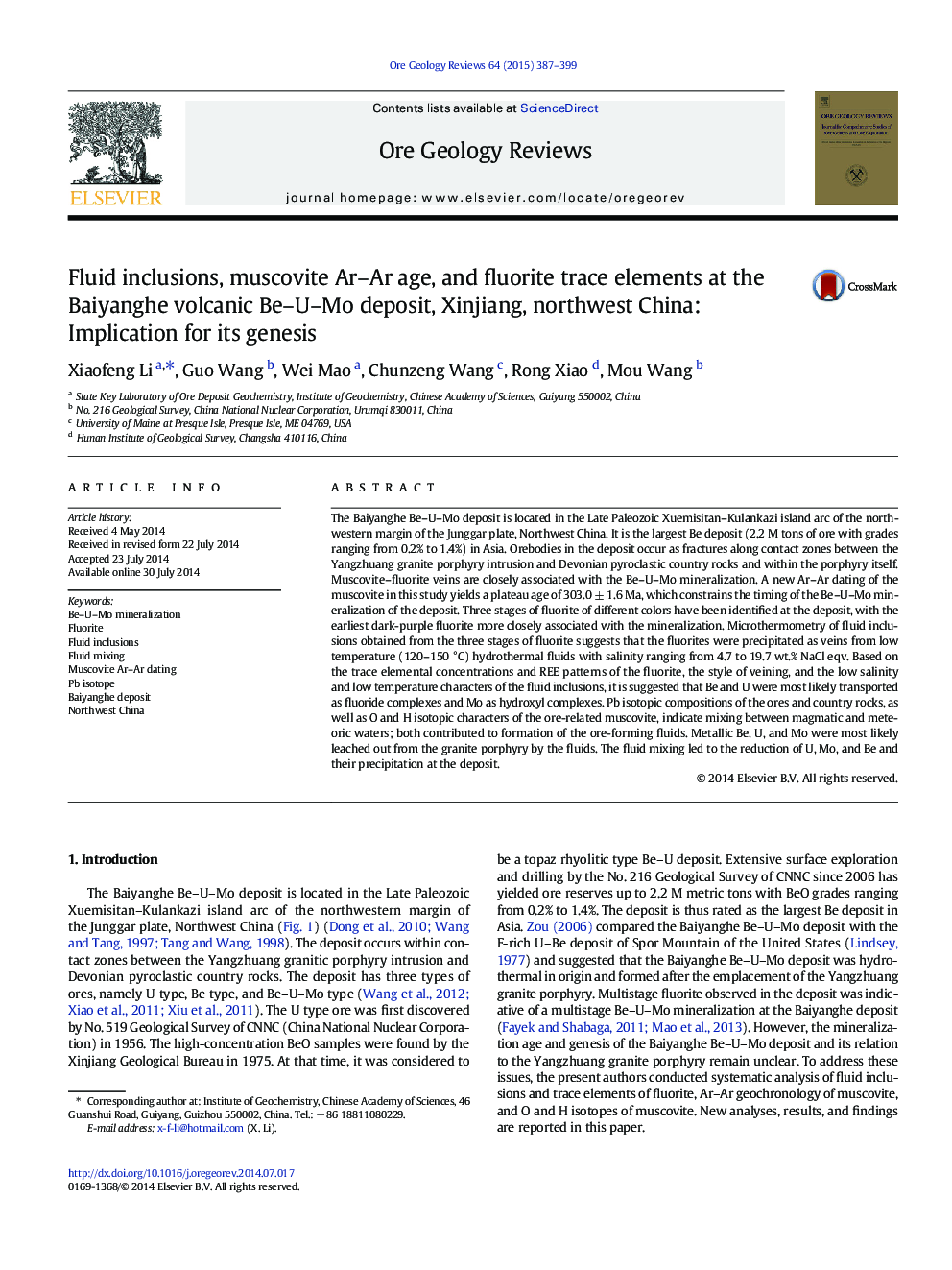| کد مقاله | کد نشریه | سال انتشار | مقاله انگلیسی | نسخه تمام متن |
|---|---|---|---|---|
| 4697112 | 1637239 | 2015 | 13 صفحه PDF | دانلود رایگان |
The Baiyanghe Be–U–Mo deposit is located in the Late Paleozoic Xuemisitan–Kulankazi island arc of the northwestern margin of the Junggar plate, Northwest China. It is the largest Be deposit (2.2 M tons of ore with grades ranging from 0.2% to 1.4%) in Asia. Orebodies in the deposit occur as fractures along contact zones between the Yangzhuang granite porphyry intrusion and Devonian pyroclastic country rocks and within the porphyry itself. Muscovite–fluorite veins are closely associated with the Be–U–Mo mineralization. A new Ar–Ar dating of the muscovite in this study yields a plateau age of 303.0 ± 1.6 Ma, which constrains the timing of the Be–U–Mo mineralization of the deposit. Three stages of fluorite of different colors have been identified at the deposit, with the earliest dark-purple fluorite more closely associated with the mineralization. Microthermometry of fluid inclusions obtained from the three stages of fluorite suggests that the fluorites were precipitated as veins from low temperature (120–150 °C) hydrothermal fluids with salinity ranging from 4.7 to 19.7 wt.% NaCl eqv. Based on the trace elemental concentrations and REE patterns of the fluorite, the style of veining, and the low salinity and low temperature characters of the fluid inclusions, it is suggested that Be and U were most likely transported as fluoride complexes and Mo as hydroxyl complexes. Pb isotopic compositions of the ores and country rocks, as well as O and H isotopic characters of the ore-related muscovite, indicate mixing between magmatic and meteoric waters; both contributed to formation of the ore-forming fluids. Metallic Be, U, and Mo were most likely leached out from the granite porphyry by the fluids. The fluid mixing led to the reduction of U, Mo, and Be and their precipitation at the deposit.
Journal: Ore Geology Reviews - Volume 64, January 2015, Pages 387–399
